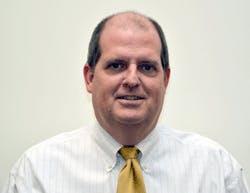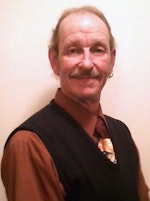Established more than 85 years ago, the National Automotive Parts Association (NAPA) has 64 distribution centers serving all 50 states and more than 6,100 nationwide parts stores.
Q: How are consumer needs/demands relating to brake jobs changing?
A: People are holding on to their cars for longer periods (more than 11 years), which leads to more and costlier maintenance and repair bills – up an estimated 10 percent in the last year. A brake job is typically one of the first repair jobs that will send consumers to an aftermarket service provider instead of a dealer.
When it comes to replacement brake pads, consumer needs are simple: Whether they have plenty of time to stop or have to stop suddenly, they want assurance that their brakes are in top condition, on day one and day 1,000. Better stopping is all about driver confidence, pedal feel and safety. When brake pads are replaced, drivers not only expect the new brakes to work, but they expect to feel, hear and see a difference. While consumer spending is starting to see an uptick, people still want the most value they can get. This is why we offer a range of products – to provide value at all price points.
The keys to success for aftermarket retailers and wholesalers is to make sure drivers don’t “trade down” when getting their first…or second or third…brake job.
Q: Many brake pad suppliers market their products according to a “good-better-best” scale. Does that mean that one company’s “better” product is equivalent to another company’s “better” product?
A: The brake pad aftermarket is a fragmented one, with well over two dozen brands competing. Increasingly, brake pads are being sourced from third parties. The problem is that many brake pad suppliers use different formulations and a different approach to matching performance to pricing levels, making it difficult to accurately compare options. Lack of state and federal performance and safety standards for aftermarket friction materials compounds the confusion. This is one reason that NAPA Rayloc invests significant money and resources on validation testing – to ensure that our suppliers consistently meet our specifications.
Some brake pad suppliers define “good, better, best” solely on price, or they may try to apply “good, better, best” to the target customer, from DIY to professional. At NAPA Rayloc, we take an engineering approach to “good, better, best” and have done so for the last 15 years, based on the technology of our friction materials and other components like shims and hardware.
We’ve found that most consumers’ decisions about brake replacement are often a tradeoff between optimal performance and the vehicle’s age and mileage. They’re willing to spend more than the minimum, but they may not be able to afford the most expensive. This is why we focus on the technology and performance of our products instead of price point or target customer when designating “good, better and best.”
Q: Brake noise seems to be a common consumer complaint when it comes to getting new brakes. What should the aftermarket do to reduce noise-related customer complaints and comebacks?
A: Cars today are engineered to be quieter than ever. The result is that brake noise can be easier to hear today than it was years ago. Brake noise has many potential causes and many possible solutions – all of which are often unrelated to the pads themselves. Indeed, many components of the brake system and surrounding systems play a role in generating or reducing noise, from the pads’ friction material, slots and chamfers to the shims, hardware and lubrication used during installation. Often, wear patterns on the used brake pad can help to identify the symptom or source of the noise. Noise can also result when lightweight rotors are paired with premium brake pads, which can result in sub-optimal performance.
While noise doesn’t necessarily mean sacrificed performance, it is still an important consideration in regard to customer satisfaction. Therefore, aftermarket retailers and wholesalers should educate customers on how to minimize and eliminate brake noise with a complete brake repair.
Q: Friction is an important component of a replacement brake system, but is it the only thing to be concerned about?
A: No. Slapping on a new set of pads is not enough. A thorough brake job requires hardware replacement, brake fluid service and more. Other components like insulators (shims), slots, chamfers and hardware can also make a world of difference. Not all insulators are the same. Many manufacturers cut costs by using inferior materials with limited noise-dampening properties. Many materials degrade over the life of the pad. They may look good out of the box, but can quickly degrade during braking.
When slots and chamfers match OE design, it results in premium noise reduction and helps to ensure that the brakes are restored to their original condition. OE-matched slots improve pad stability under harsh braking and improve harmonics for no noise. And when pads are chamfered, it prevents initial engagement noise between the pads and rotor.
Hardware should be replaced with every pad replacement. Worn hardware can cause heat damage, premature wear, reduced gas mileage and even potential brake failure.
Q: How is legislation in the states of California and Washington impacting the replacement brake market?
A: Over the last five or six years, ecologists in the state of Washington and California have determined that a rise in copper content in the bays, rivers and streams is affecting the population of aquatic life. Dust from automotive disc brake pad and shoe wear was determined to be a contributor. In an attempt to curtail further contamination, Washington State passed legislation to phase out copper in disc brake pads over the course of 15-20 years. The legislation will also restrict the use of other heavy metals and asbestos. As a result, the entire aftermarket and new car manufacturers will be required to undergo a huge technological shift with regard to their formulations to meet these requirements.
The friction engineers at NAPA Rayloc have been working diligently to remove copper from our products in anticipation of this mandate while also building upon the quality our customers demand. In fact, many of our formulations already meet the final requirements of the legislation – years in advance of deadlines.
For more information, visit www.rayweb.rayloc.com.
Subscribe to Aftermarket Business World and receive articles like this every month….absolutely free. Click here.



